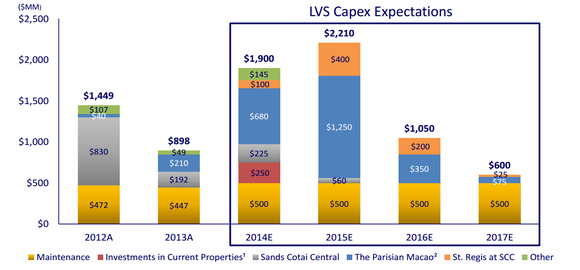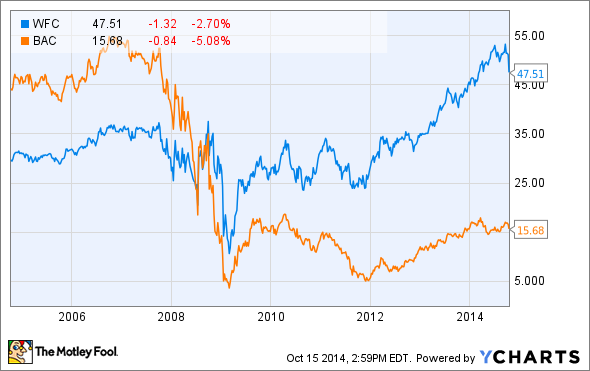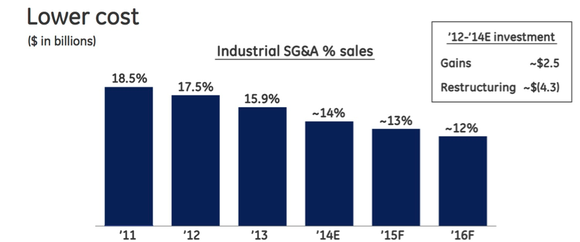Filed under: Investing

Source: OmniVision Technologies.
The release of Apple's iPhone 6 has had investors excited throughout 2014, both about the tech giant's shares and the stocks of its primary suppliers. Among those companies is OmniVision Technologies , which has seen impressive gains so far this year as shareholders hoped that the maker of image sensors would get another boost from the latest Apple product cycle. Yet OmniVision doesn't have the penetration with the iPhone that it used to, and the lesson of GT Advanced Technologies looms large over every Apple supplier, showing the need for as much diversification as possible in your customer base. Let's take a closer look at OmniVision Technologies to see if the stock can sustain its impressive climb.
Stats on OmniVision Technologies
|
2014 YTD Return |
38.5% |
|
Expected Fiscal 2015 Revenue Growth |
(2.2%) |
|
Expected Fiscal 2015 EPS Growth |
(11.4%) |
|
Expected 5-Year Growth Rate |
12% |
Source: Yahoo! Finance.
Why has OmniVision Technologies jumped this year?
OmniVision has had a strong year, even before Apple's new products hit the shelves. OmniVision's sensors appear in a wide variety of different manufacturers' smartphones, and the rise of mobile technology worldwide has contributed greatly to the company's overall success. Low-cost 3G smartphones have seen global sales volumes jump dramatically, and in China, the transition to 4G LTE wireless service has spurred greater adoption of more advanced devices that take greater advantage of OmniVision's higher-end technology.
Moreover, OmniVision continues to push forward with new innovations in order to keep its competitive edge. Among the company's initiatives are efforts to generate 3-D image data that can aid in enhancing picture quality, as well as its PureCel high-performance sensors that make better use of available light with relatively low power and reasonable cost. In addition, OmniVision is looking at ways to use its sensors to interact with users through eye-tracking software and gesture recognition.

Source: OmniVision Technologies.
In addition, OmniVision has gone well beyond the traditional mobile-device space to find outlets for its products. The rising adoption of imaging sensors in vehicles has made the automotive market a key driver of growth for the company, and as the importance of safety rises, ways to use cameras -- not only for rearview vision but also less obvious safety-enhancing features -- could drive demand even higher.
Can the Internet of Things boost OmniVision's prospects?
Another big possibility for OmniVision's growth could come from the Internet of Things. Like sensor-producing peer InvenSense , OmniVision stands to gain from the need for previously disconnected electronic devices to provide data for analysis elsewhere in the cloud. To gather that data, devices will need to include an array of sensors that they've previously had no need of, and providing those sensors could give both OmniVision and InvenSense huge growth opportunities.
Clearly, OmniVision Technologies has learned its lesson from its experience three years ago, when Apple chose to go with a competing provider for the main camera chips in its then-latest iPhone series. Just as GT Advanced Technologies saw more recently, relying too much on Apple can leave a company without good options if something happens to jeopardize that relationship. By contrast, OmniVision can now bargain from a position of strength -- not only with Apple, but also with other providers of leading-edge technology -- and that should give shareholders confidence that the company will avoid the fate of other Apple suppliers.
For the immediate future, investors should nevertheless keep a close eye on how well OmniVision's products fare among new Apple products. Even though OmniVision's diversification efforts have been smart, the company still relies on Apple for much of its sales, and it needs to do what it can to stay in the i-Device giant's good graces as long as possible.
Apple Watch revealed: The real winner is inside
Apple recently revealed the product of its secret-development "dream team" -- Apple Watch. The secret is out, and some early viewers are claiming its everyday impact could trump the iPod, iPhone, and the iPad. In fact, ABI Research predicts 485 million of this type of device will be sold per year. But one small company makes Apple's gadget possible. And its stock price has nearly unlimited room to run for early in-the-know investors. To be one of them, and see where the real money is to be made, just click here!
The article How OmniVision Technologies Has Skyrocketed 39% in 2014 originally appeared on Fool.com.
Dan Caplinger owns shares of Apple. The Motley Fool recommends Apple and InvenSense. The Motley Fool owns shares of Apple and InvenSense. Try any of our Foolish newsletter services free for 30 days. We Fools may not all hold the same opinions, but we all believe that considering a diverse range of insights makes us better investors. The Motley Fool has a disclosure policy.Copyright © 1995 - 2014 The Motley Fool, LLC. All rights reserved. The Motley Fool has a disclosure policy.
Read | Permalink | Email this | Linking Blogs | Comments
















 The U.S. Labor Department is set to report weekly jobless claims on Thursday morning. What is interesting about the trends of late is that weaker economic readings are prevailing, but not in jobs data. Last week's report of the prior week was set at 287,000 before revisions. The consensus estimate for this week is represented as 290,000 by both Bloomberg and by Dow Jones.
The U.S. Labor Department is set to report weekly jobless claims on Thursday morning. What is interesting about the trends of late is that weaker economic readings are prevailing, but not in jobs data. Last week's report of the prior week was set at 287,000 before revisions. The consensus estimate for this week is represented as 290,000 by both Bloomberg and by Dow Jones.



















